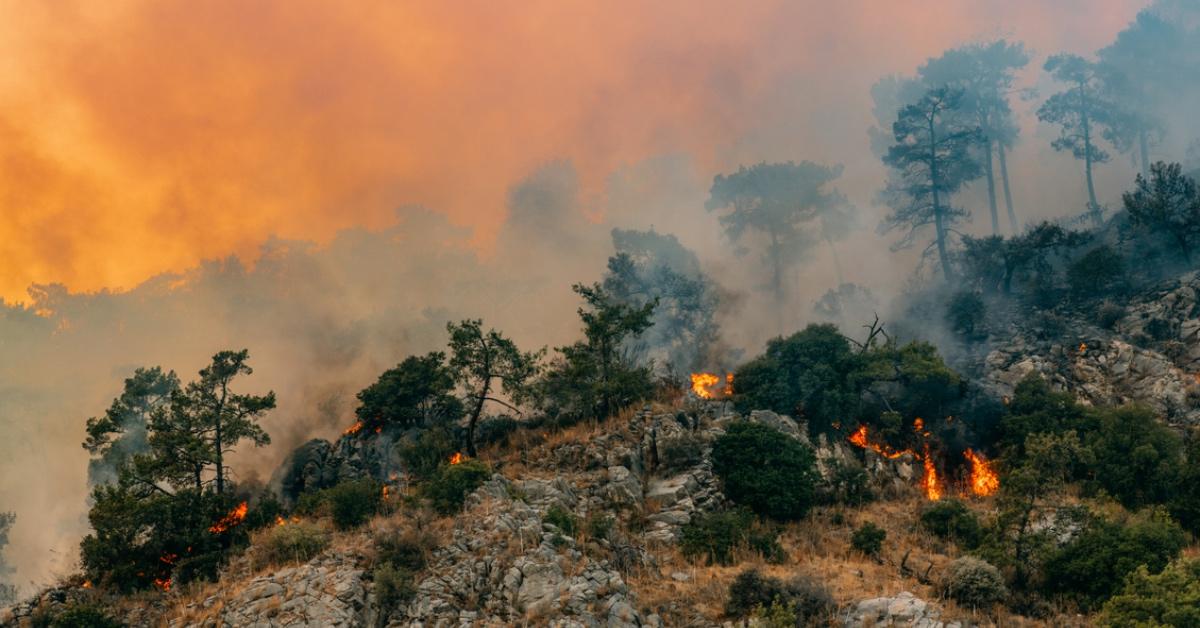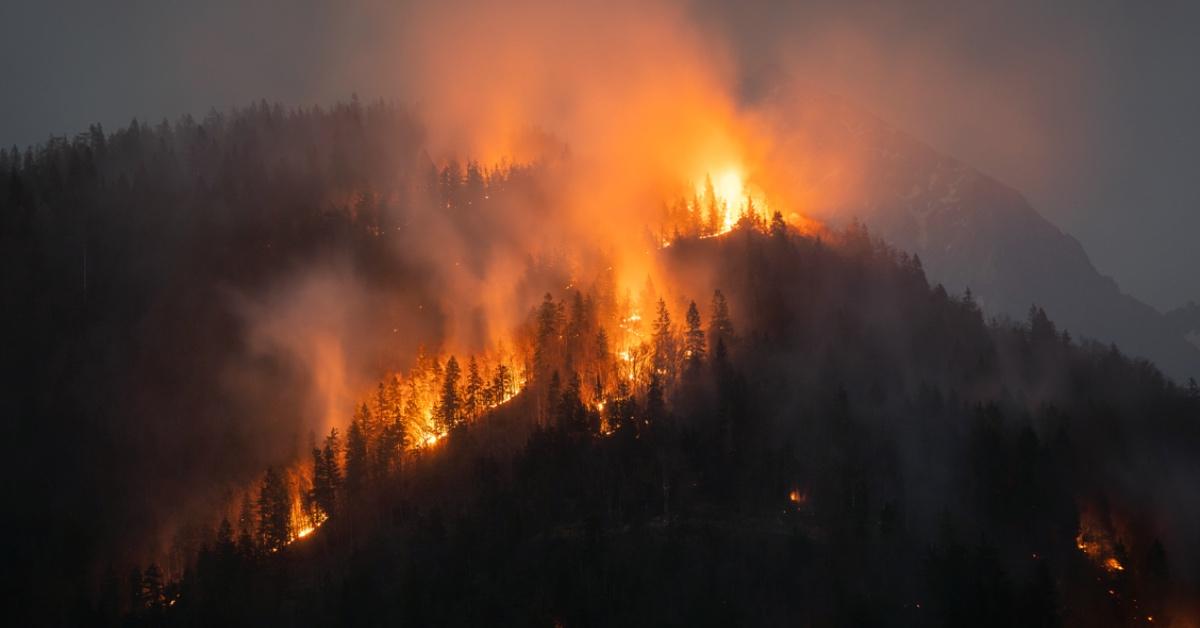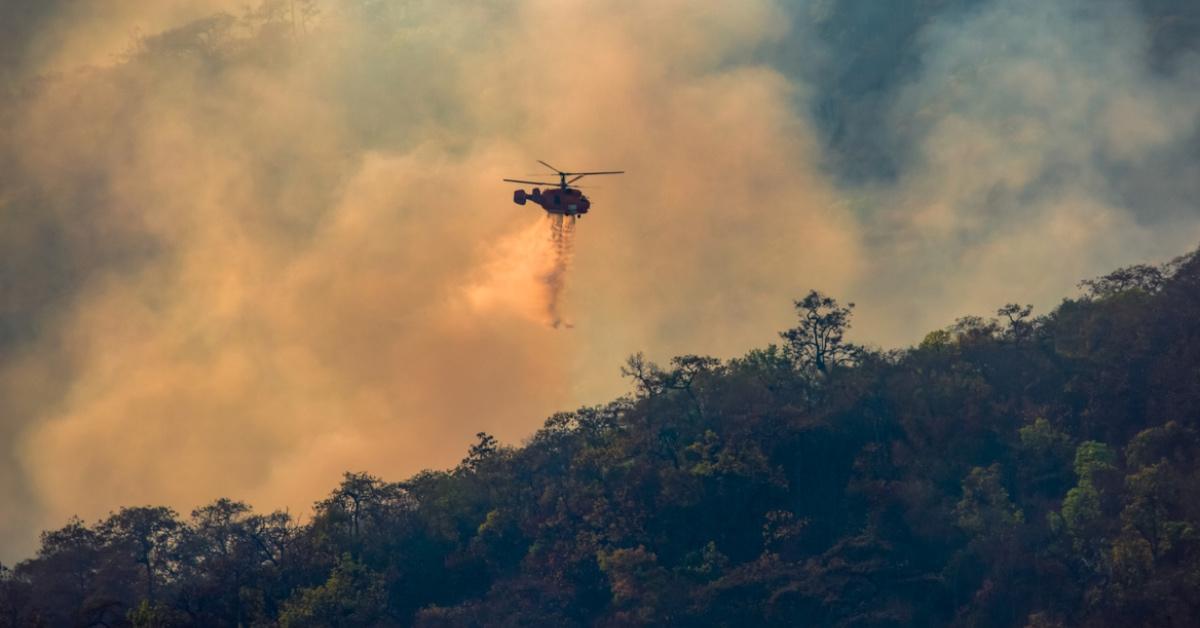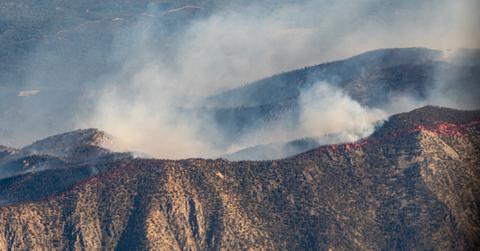Maui Wildfires Are Moving Towards Total Containment — How Did They Start?
Updated Aug. 14 2023, 9:12 a.m. ET
The increased frequency of natural disasters leaves many communities frustrated and exhausted. From the 2023 Central Canada wildfires to horrific floods across the U.S., climate change is only increasing the chances of experiencing a once-in-a-lifetime event. Wildfires especially are fueled by climate change, which makes it easier for fires to start and prolong the blazes.
In an unexpected and catastrophic turn of events, on Aug. 9, 2023, deadly wildfires began to spread across the island of Maui in Hawaii. The wildfires are not yet declared completely under control as widespread devastation spreads across Maui, including the resort city of Lahaina. So, the question remains, how did the Maui fires start? Here's what to know.

How did the Maui fires start?
In 2023, three active wildfires on the island of Maui in Hawaii sparked enormous blazes that forced thousands to evacuate. According to the Associated Press (AP), the biggest contributing factor to the fires is conditions created by Hurricane Dora, including strong, hot winds.
CNN also notes that Hawaii experienced drought during the first week in August 2023, potentially creating a drier environment in which it would be easier for wildfires to start.
However, the exact cause of the fires is unknown.
Maj. Gen. Kenneth Hara, commander general of the Hawaii Army National Guard, said in an Aug. 9 briefing per CBS News, "We don't know what actually ignited the fires, but we were made aware in advance by the National Weather Service that we were in a red flag situation — so that's dry conditions for a long time, so the fuel, the trees and everything."
He added that the dry conditions, humidity, and high winds "set the conditions for the wildfires."

The latest update from Maui says the fire on Lahaina is 85 percent contained.
CNN reported that the most devastated wildfire area included the western Maui community of Lahaina. According to the Associated Press, as of Aug. 14, Hawaii governor Josh Green estimated that more than 2,700 structures on Lahaina were destroyed and "an estimated value of $5.6 billion has gone away."
On Aug. 11, at least 10,000 people on Maui were without power, but by Aug. 14, only about 4,500 were, according to PowerOutage.us maps of Maui.
Additionally, NBC News reports that as of Aug. 14, the death toll in Maui has risen to 96. Specialist teams continue to search through the ruins for the missing, and as of Aug. 13, only 3 percent of the ruins have been searched. The wildfire in Maui now marks the deadliest wildfire in U.S. history, surpassing the 2018 Camp Fire in California, which killed 85.

On Aug. 14, a press release from Maui County officials said the fire in Lahaina was 85 percent contained. The release also notes that the Upcountry/Kula fire is 60 percent contained, the Pulehu/Kihei is 100 percent contained, and the Puʻukoliʻi/Kaanapal fire is entirely extinguished.
There are many ways to aid those affected by the Maui wildfires, including these nonprofit organizations shared by The Weather Channel that include The Hawaii Community Foundation, The Council for Native Hawaiian Advancement (CNHA), The Maui Food Bank, Maui United Way, The Maui Humane Society, and more.
This article, originally published on Aug. 10, 2023, has been updated.
